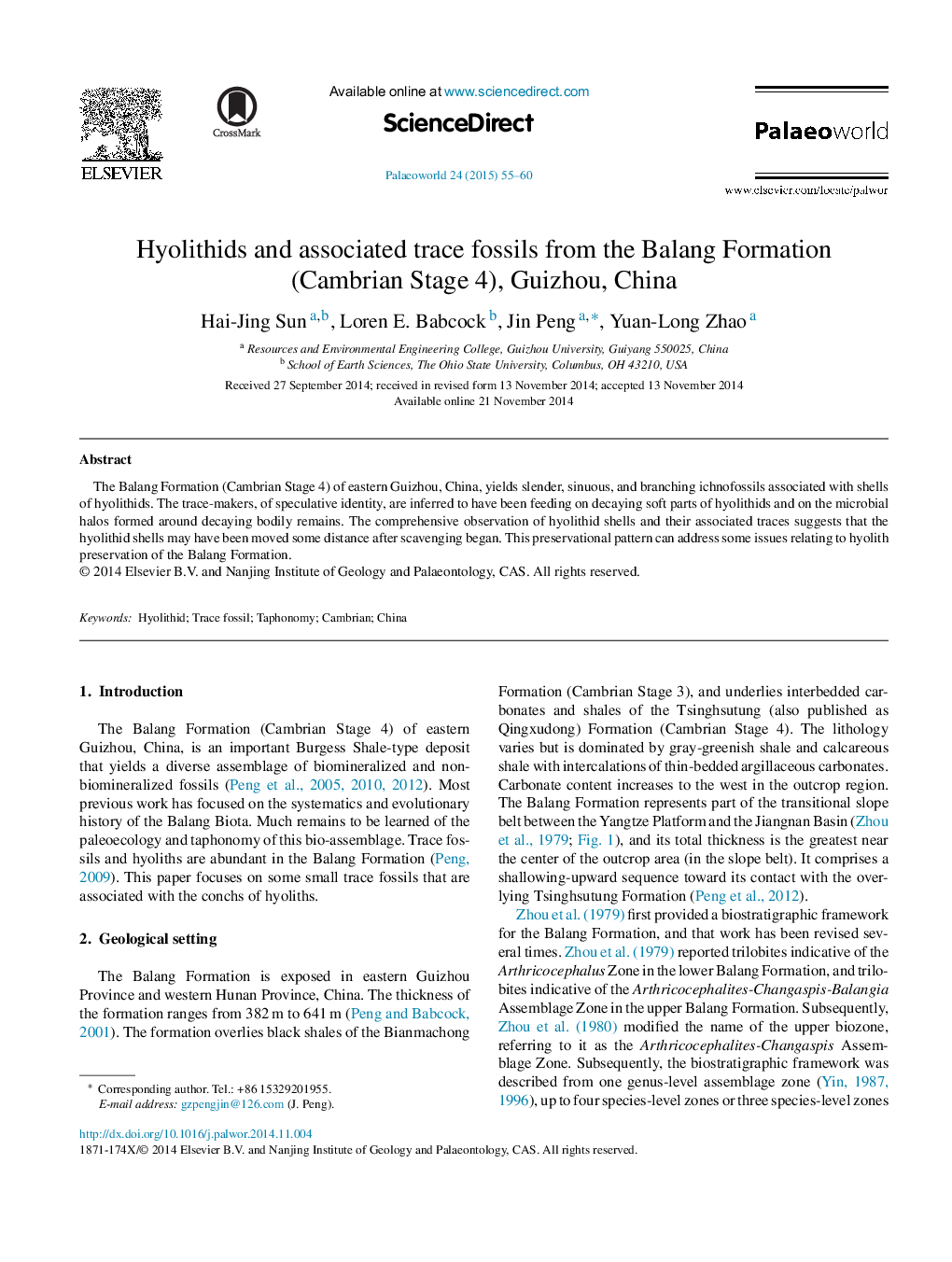| Article ID | Journal | Published Year | Pages | File Type |
|---|---|---|---|---|
| 4749620 | Palaeoworld | 2015 | 6 Pages |
Abstract
The Balang Formation (Cambrian Stage 4) of eastern Guizhou, China, yields slender, sinuous, and branching ichnofossils associated with shells of hyolithids. The trace-makers, of speculative identity, are inferred to have been feeding on decaying soft parts of hyolithids and on the microbial halos formed around decaying bodily remains. The comprehensive observation of hyolithid shells and their associated traces suggests that the hyolithid shells may have been moved some distance after scavenging began. This preservational pattern can address some issues relating to hyolith preservation of the Balang Formation.
Keywords
Related Topics
Physical Sciences and Engineering
Earth and Planetary Sciences
Palaeontology
Authors
Hai-Jing Sun, Loren E. Babcock, Jin Peng, Yuan-Long Zhao,
